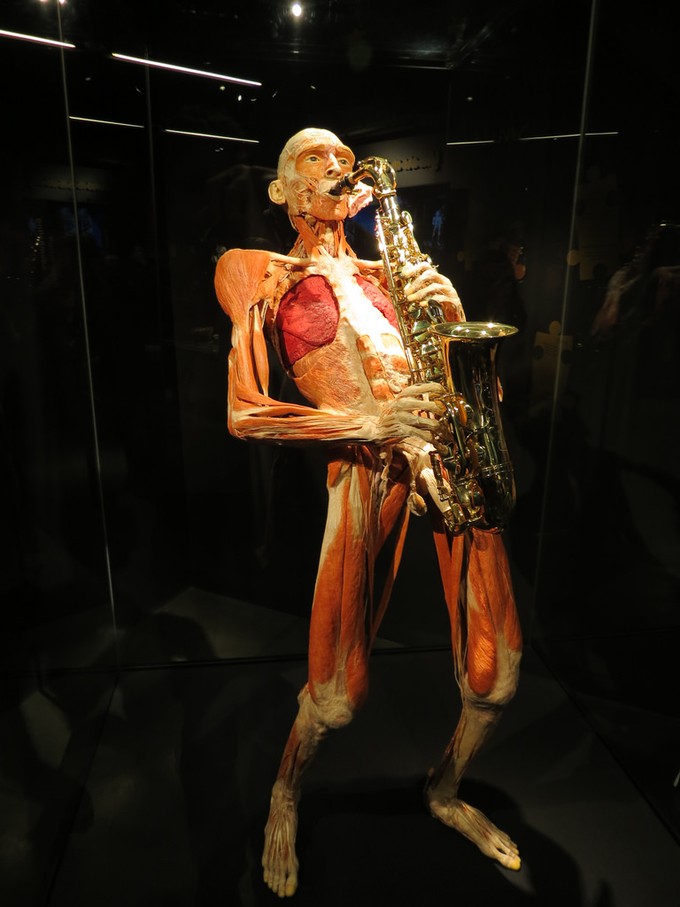What are the moral and visual implications for us, the viewers and does death represent the termination of human rights? There’s a whole other debate to be had about what is art, but for now let’s define it as a subjective form of aesthetic, emotional, or intellectual stimulation i.e. if someone thinks it’s art and you get something from it ,then it is art. Now can a dead person be considered as art? And if so, is it right that they are allowed to be?

The controversial works of Dr Gunther Von Hagens divided opinion since the first Body Worlds exhibition in Tokyo in 1995. He invented plastination, a method of preserving the human body after death and used it to display dead people without skin, revealing the human anatomy. Some consider Body Worlds as an art exhibition, and found beauty in it. Some consider it as purely educational and scientific, and others perceive it to be merely sick and deplorable. So is it art or science? Take a look at this picture above and see what you think…
Over 38 million people have experienced Body Worlds in over 90 cities across the world, so is the question of morality even relevant anymore? Knowing that the subjects are consensual participants is the only thing I needed to know to be comfortable with it. But should we question the morals of the participants, the artists, and the viewing public? Everyone is implicit in some way in the exhibition happening. Many would say if you don’t like it, don’t go to see it. But, like me, if you are interested Body Worlds is showing in cities across Europe and America.
If there are people who believe that Body Worlds is disrespectful to the dead then they should surely share that opinion about the display of the Gebelein Man at The British Museum. This Egyptian man and the reconstruction of his grave demonstrate the burial customs of the time.
The subject is non-consensual in the display of his corpse, and he’s even been given the nickname of ‘Ginger’ on account if some hair tufts. Is this disrespectful? How long does a dead person have rights? A five thousand year old mummy is displayed for all to see, but a two minute old corpse would likely have their face covered and be taken out of public sight as soon as possible.
So then it surely comes down to the living and their cultural conditioning which provokes and determines the answer to these questions. Obsession, legacy, respect for the dead and the living all vary depending on your location in the world. It seems to me that we often care more about the reaction of the living to death than the dead person’s views or rights. What do you think?